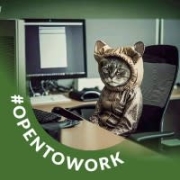Much of the feedback I get from customers on how Microsoft Purview improves organizations is around the visibility factor at the end of the day. It's all about protecting data and ensuring you don't lose data externally and internally.
Many customers also say that Microsoft Purview also helps simplify the management of data governance policies, as it gives you visibility, automation, and authentication. For example, you can now see classifications whether your documents meet specific criteria or not, through Microsoft Purview.
From my experience and customer feedback, one of the most valuable features of Microsoft Purview is ease of use, especially for content hosted within Microsoft 365 and Azure. You can connect Microsoft Purview to different sources.
I also like that the pricing model for the solution is reasonable, though that would depend on how much you use. That makes it much easier for people to have that initial setup, get started, and see all of the information straight away. If you want a more complex Microsoft Purview setup, you may have to contact a consultant for more technical aspects to enable the solution. Still, one of the most significant selling points for me is the setup, including the automation experience.
Microsoft Purview delivers data protection across multi-cloud and multiple-platform environments, including AWS and GCP, which I find very important because if you look at the percentage of customers that have multiple automated channels or multiple-platform setups, it's very, very high, primarily because customers don't put eggs in one basket.
It's also essential for me that Microsoft Purview can connect to iOS, Mac, and Android devices, including other SaaS apps, as I spend quite a lot of my time using my iPhone and iPad, whether for a webinar at the end of the day while I'm preparing dinner, and that's still the same information on my company laptop or desktop, which means I still need to ensure that the data I access is still very secure.
Though you can protect yourself with multifactor authentication, people find ways to get past that, so you have to ensure that even if someone's getting into your organization now, the location within is siloed, and you could see the different classification levels that could easily be applied, making it more difficult for that person to get what he needs easily, compared to SharePoint that's open to everyone, making it a walk in the park, so what Microsoft Purview is able to provide is very important in this hybrid age.
I find Microsoft Purview very important in its natively integrated compliance across Azure, Dynamics 365, and Office 365, as you'll have sensitive content stored these days, especially if you're an organization with a lot of customer data in your database. Microsoft Purview helps secure customer records and also has a data loss prevention feature, plus data governance and compliance features that I find very important for organizations.
Microsoft Purview has also helped reduce the number of solutions my company needed. The solution is part of the project Microsoft has rapidly been developing, and over the years, the components of the Microsoft services went through a confusing renaming cycle. There were a lot of different services, but I've found out how each should be used, such as for security and compliance, some complementing technologies for identification, classification, traffic, and AI, for example, that I'm continuing to evaluate. At first, there was a bit of confusion, but now it all makes sense.
The simplicity of the number of solutions made data governance a lot easier. With Microsoft Purview, you won't have to interact with a substantial amount of systems, and I'm a firm believer that more risk could arise when you introduce more complexity into a solution or system you're developing. The services you make use of could sometimes deprecate and change features. Hence, having compliance, governance, automation, and data discovery features in one solution, such as Microsoft Purview, makes my life and the customer's life easier.
A key feature of Microsoft Purview for me is that it was built while considering critical regulations worldwide. My company works with organizations where there's usually a requirement for compliance, such as GDPR. I also work with many Germany-based customers that require GWC compliance, and there's strictness with the way data is stored and classified. You must advise and know all regulations, which Microsoft Purview enables you to do. For example, if you look at the amount of data in terms of size, such as the terabytes being housed in various websites, there's no way you could get the information without Microsoft Purview. There's too much data within organizations now, and all it takes is a tiny percentage of that data to be shared in the wrong way or be leaked, which could incur substantial fines, so Microsoft Purview is a product that justifies itself in that very premise.
Microsoft Purview has also enabled visibility, giving customers an overview of how much data is compliant. The solution also provides visibility into the quality of data, movement, and performance, so visibility is another valuable feature of Microsoft Purview.
My company uses the AI and automation features of Microsoft Purview, which I find very critical within the solution. The speed and accuracy of risk detection improved with AI and automation features because classifying data is easier now, giving me a headstart. The AI can do essential, light work, going around all of the various containers within the organization, so the team only does twenty percent of the work now, such as management, reviews, and reports.
Microsoft Purview AI and automation make it less admin-intensive from a data protection and compliance point of view. If you look into a role within an organization, for example, I'm a DPO, which is a relatively new role. With Microsoft Purview, you'd only need one to two people full-time, another key benefit of the solution. The rest of the work would continue to fall on the shoulders of the IT team, which is stretched in organizations today.
The solution enables you to show real-time compliance. Microsoft Purview gives you the necessary data because it ties into the compliance scores when you eliminate instances. Right now, there are a lot of backlog reports in terms of compliance on static IPs, data leakage, lineage, and backup.
Real-time compliance data provided by Microsoft Purview has helped organizations, especially in terms of meeting with compliance regulators. I helped organizations with technical enablement, mainly stakeholders who requested assistance, and the reporting in Microsoft Purview has taken so much responsibility from the hands of stakeholders. The solution has better reporting that has broken down data for organizations, giving headlines and figures you usually won't easily catch, which makes successful deployment a lot easier.
Microsoft Purview has also helped reduce the time to action on insider threats, whether fraud or rest protection. Organizations, especially huge financial organizations, are bothered by threats, and Microsoft Purview has been beneficial. In terms of how much the solution reduced the time to action on insider threats, based on all industries I've worked with, it's twenty to twenty-five percent. I'm basing this figure on the fact that the automation from Microsoft Purview is very powerful, and the solution gives accurate protection. If you get an alert from Microsoft Purview, it's usually for valid reasons.
Overall, Microsoft Purview has affected the ability of customers or organizations to stay on top of compliance. You see many good products in the market, but if you have a customer mainly using Microsoft products, such as Dynamics 365, CRM, etc., and the customer belongs to the financial industry or the public sector, for example, that's dealing with information, it's a no-brainer to have Microsoft Purview in the organization.
One drawback of Microsoft Purview, though it's beneficial and easy to use, is that when you start plugging in connectors for third-party sources when setting the solution up for data collection, it becomes a bit more tricky. There's limited documentation, so it's not as intuitive as setting up other parts of Microsoft Purview. If the process of connecting with third-party cloud providers and other SaaS products could be simplified, that would make Microsoft Purview a better product.
In terms of how Microsoft Purview supports ingestion from non-Microsoft data sources, from a user experience point of view, it's a bit more challenging and results in a bit more struggle in that area. Overall, it's decent, but it would benefit customers if Microsoft spent more time and energy improving that experience and getting it on par with other Microsoft products. Microsoft could make it a lot easier to build connections with other cloud vendors, such as AWS and GCS. Microsoft will get there eventually, but it needs to understand its customer base and look at the percentage.
Deploying Microsoft Purview is pretty straightforward, though an organization may have to contact a partner or consultant to assist with deploying the tool because my company doesn't deal with critical business situations. There's a need to ensure that the website is set up proactively, works with the tool, and also covers information on how to address possible issues that could arise in the future.
The deployment itself isn't too tricky and can be done quickly, but you must ensure that the organization has adopted it. It's not merely about deploying Microsoft Purview, and then that's it. You must ensure the proper psychology is there and that you're continuing to scan new data sources if you're buying into a new service. You have to keep the solution up-to-date and also know what to do if a disaster occurs. Microsoft Purview isn't a tool you can just turn off. Each organization goes through a pilot, and my company does a phased approach, such as a pre-production environment. My company shows the customer how the tool works and what it would do in different scenarios and lets the customer practice using Microsoft Purview.
You get ROI from Microsoft Purview because its cost is entirely justified, considering the value it brings back to your organization from the data insights the tool provides. The significant decrease in the percentage of risks, particularly from insider frauds and data loss, whether maliciously or unintentionally, or by accident, helps the organization enjoy ROI from Microsoft Purview.
The solution also helps my company uphold its reputation of abiding by European legislation, such as the GDPR, knowing that the company can keep data secure and that Microsoft Purview can help prevent organizations or companies from being out of business by decreasing data loss and insider fraud risks, so I'd say the ROI can be pretty high from the solution.
Microsoft Purview has reasonable pricing. The solution helps save money, and its cost is justified, at least for the organizations I've worked with. Microsoft Purview has a pay-per-use pricing model, so it's one of the most cost-effective tools, as your cost will be based on your usage. It's a pricing model that Microsoft has nailed down, making it great that whether you're a small organization or a multinational, giant organization, the pricing model for Microsoft Purview works. If you look into the cost of the breach versus the ongoing learning cost over a year or so, the solution's price is more than justified. However, I'm unable to give the exact figure on how much money Microsoft Purview can save an organization, as I'm a consultant who doesn't have precise information.
I don't use Microsoft Purview for data loss protection within the company, but I've seen its use case, so I understand where you would use that feature.
Regarding how Microsoft Purview AI and automation features affected the quality of insights my customers have, it's hard to say currently because there's not much of a benchmark to go off. The AI isn't going to be as accurate as a person who's been in the organization for ten years, for example, who knows the data and types of data the organization has. If you look at the way AI is developing, it's not fair to rate it yet, but if it keeps going in the same trajectory, it will be possible in the not-so-distant future.
Microsoft Purview has a cloud-based deployment on Azure.
The customers I've worked with vary from multinational data organizations with fifty thousand people to organizations with five hundred to less than a thousand people.
In terms of maintenance, my recommendation is to always keep on top of it, such as continuously scanning and being on top of it when building new apps and doing data migrations, but not necessarily in terms of updates. You should ensure encrypting your data as well, but from a maintenance point of view, Microsoft Purview is pretty self-sufficient, but you'd have to monitor it and not forget about it if you want to keep reaping the benefits.
I would recommend Microsoft Purview to others, but my advice is to ensure that the data layer underneath your organization is solid and that you're building a solid foundation. The success of any product or solution is dependent on a good foundation. You also have to ensure that you have the right people, the deployment is based on your industry, and you're meeting the standards, whether setting the solution up within a year or so. It's similar to building a house. Without the proper foundation, you're never going to finish building properly. Issues will crop up, and your home won't be properly aligned. However, if you build it entirely on a concrete, perfectly flat base, then it will be maintained well, and you can go forward with it.
My rating for Microsoft Purview is eight out of ten because it only requires limited improvement, and you won't find another solution better than Microsoft Purview in the market.
I'm a Microsoft consultant involved in the technical enablement of various Microsoft services.













